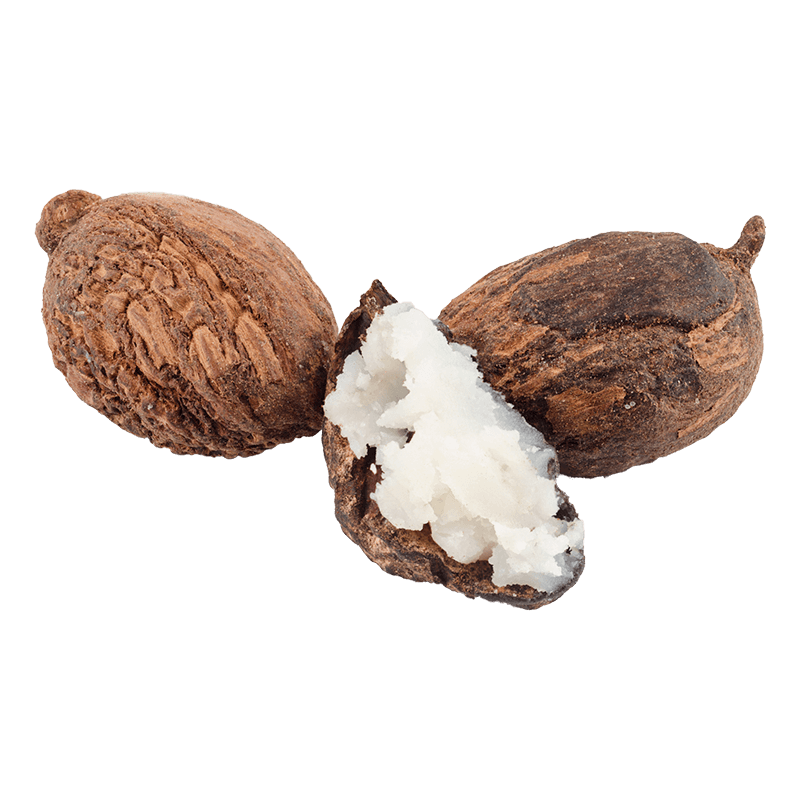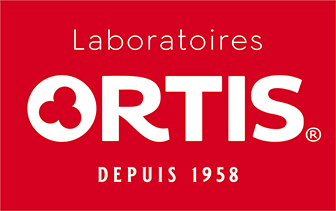
Shea
Latin name
Origin
Used part
Active components
Triterpene esters (α-amyrin, butyrospermol, lupeol): antioxidant and anti-inflammatory action that protects the skin against UV-B rays and premature ageing.
Phytosterols (campesterol, stigmasterol and β-Sitosterol): anti-inflammatory action. Phenolic component (cinnamic acid): antioxidant. The phenolic profile is similar to that of green tea.
Tocopherols (vitamin A): antioxidant.
Fatty acids (stearic and oleic acid): the stearic acid content lends shea butter its solid consistency, while the percentage of oleic acid influences how creamy it is.
Usage
Bibliographical references
- Lipid composition of nigerian Butyrospermum paradoxum Kernel.
G.I.O. Badifu
J Food Compos Anal 2:238-244.
ScienceDirect: http://www.sciencedirect.com/science/article/pii/0889157589900215 - Phenolic constituents of shea (Vitellaria paradoxa) kernels.
Maranz S, Wiesman Z, Garti N.
J Agric Food Chem. 2003 Oct 8;51(21):6268-73.
Pubmed: http://www.ncbi.nlm.nih.gov/pubmed/14518954 - Anti-inflammatory effects of shea butter through inhibition of iNOS, COX-2, and cytokines via the Nf-κB pathway in LPS-activated J774 macrophage cells.
Verma N, Chakrabarti R, Das RH, Gautam HK.
J Complement Integr Med. 2012 Jan 12;9:Article 4.
Pubmed: http://www.ncbi.nlm.nih.gov/pubmed/22499721 - Anti-inflammatory and chemopreventive effects of triterpene cinnamates and acetates from shea fat.
Akihisa T, Kojima N, Kikuchi T, Yasukawa K, Tokuda H, T Masters E, Manosroi A, Manosroi J.
J Oleo Sci. 2010;59(6):273-80.
Pubmed: http://www.ncbi.nlm.nih.gov/pubmed/20484832 - Protection against stress by natural triterpene esters.
Ann-Charlotte Andersson
AAK, Sweden
http://www.aak.com/Global/Lfc/Artikel%20Triterpene%20ester%20June%202011.pdf - Biological activities of Lupeol.
P Wal, A Wal, G Sharma, AK Rai
Syst Rev Pharm 2011;2:96-103
Systematic Reviews in Pharmacy: http://www.sysrevpharm.org/article.asp?issn=0975-8453;year=2011;volume=2;issue=2;spage=96;epage=103;aulast=Wal - Antiprotease effect of anti-inflammatory lupeol esters.
Hodges LD, Kweifio-Okai G, Macrides TA.
Mol Cell Biochem. 2003 Oct;252(1-2):97-101.
Pubmed: http://www.ncbi.nlm.nih.gov/pubmed/14577581 - Effect of triterpenoids on the inflammation induced by protein kinase C activators, neuronally acting irritants and other agents.
Huguet A, del Carmen Recio M, Máñez S, Giner R, Ríos J.
Eur J Pharmacol. 2000 Dec 20;410(1):69-81.
Pubmed: http://www.ncbi.nlm.nih.gov/pubmed/11134658 - Randomized double-blind placebo-controlled trial on the potential modes of action of SheaFlex70 in osteoarthritis.
Cheras PA, Myers SP, Paul-Brent PA, Outerbridge KH, Nielsen GV.
Phytother Res. 2010 Aug;24(8):1126-31
Pubmed: http://www.ncbi.nlm.nih.gov/pubmed/20013816
The health claims that feature on our website in relation to the plants contained in our products are compliant with the list of health claims awaiting final assessment by the Community authorities (cf. website of the European Commission: http://ec.europa.eu/nuhclaims/). However, they may be subject to modification following their assessment by the national competent authorities.
The health claims relating to other nutrients or substances contained in our products that feature on our site are compliant with Regulation No. 432/2012 of the Commission of 16 May 2012 which establishes a list of authorised health claims authorised in relation to food products, other than those in reference to the reduction of the risk of disease as well as community-based development and child health (cf. website of the European Commission: http://ec.europa.eu/nuhclaims/).
 Belgium
Belgium
 Belgique
Belgique  België
België  France
France  Italia
Italia  Portugal
Portugal  España
España  United Kingdom
United Kingdom  Κύπρος
Κύπρος 